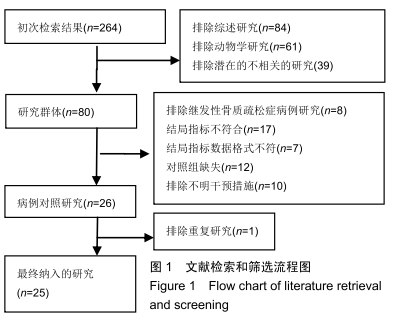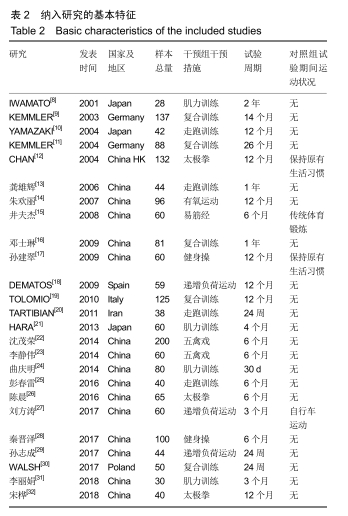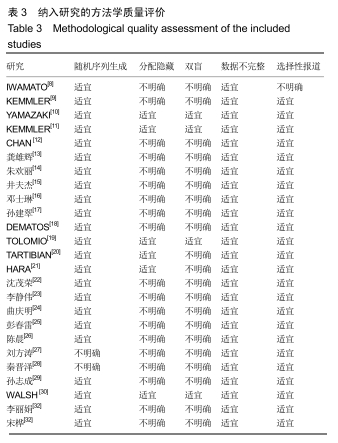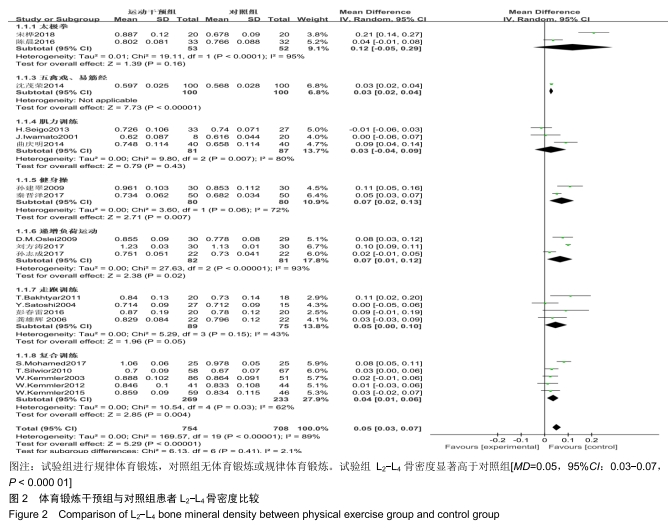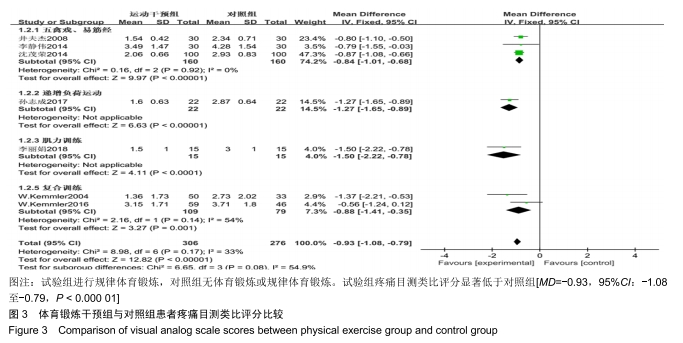[1] HENNEMANN A. Osteoporosis: prevention, diagnosis and therapy. Medizinische Monatsschrift Für Pharmazeuten. 2002; 25(5):164.
[2] PIETSCHMANN P, MECHTCHERIAKOVA D, MESHCHERYAKOVA A, et al. Immunology of osteoporosis: a mini-review. Gerontology. 2016; 62(2):128-137.
[3] 中华医学会骨质疏松和骨矿盐疾病分会. 原发性骨质疏松症诊疗指南(2017)[J].中华骨质疏松和骨矿盐疾病杂志,2017,20(5): 413-443.
[4] HARDING A, BECK B. Exercise, osteoporosis, and bone geometry. Sports. 2017;5(2):29.
[5] PARK KS, YOO JI, KIM HY, et al. Education and exercise program improves osteoporosis knowledge and changes calcium and vitamin D dietary intake in community dwelling elderly. BMC Public Health. 2017;17(1):966.
[6] 邹永.运动防治社区老年骨质疏松研究进展[J].现代诊断与治疗, 2019,30(4):535-538.
[7] LUCATO P, TREVISAN C, STUBBS B, et al. Nephrolithiasis, bone mineral density, osteoporosis, and fractures: a systematic review and comparative meta-analysis. Osteoporos Int. 2016;27(11):3155-3164.
[8] IWAMOTO J, TAKEDA T, ICHIMURA S. Effect of menatetrenone on bone mineral density and incidence of vertebral fractures in postmenopausal women with osteoporosis: a comparison with the effect of etidronate. J Orthop Sci. 2001; 6(6):487-492.
[9] KEMMLER W, ENGELKE K, WEINECK J, et al. The erlangen fitness osteoporosis prevention study: a controlled exercise trial in early postmenopausal women with low bone density-first-year results. Arch Phys Med Rehabil. 2003; 84(5):673-682.
[10] YAMAZAKI S, ICHIMURA S, IWAMOTO J, et al. Effect of walking exercise on bone metabolism in postmenopausal women with osteopenia/osteoporosis. J Bone Miner Metab. 2004;22(5):500-508.
[11] KEMMLER W, LAUBER D, WEINECK J, et al. Benefits of 2 years of intense exercise on bone density, physical fitness, and blood lipids in early postmenopausal osteopenic women: results of the Erlangen Fitness Osteoporosis Prevention Study (EFOPS). Arch Int Med. 2004;164(10):1084-1091.
[12] CHAN K, QIN L, LAU M, et al. A randomized, prospective study of the effects of Tai Chi Chun exercise on bone mineral density in postmenopausal women. Arch Phys Med Rehabil. 2004;85(5):717-722.
[13] 龚雄辉,闫福芝,张红霞.登山对绝经后骨质疏松症患者骨量的影响[J].现代中西医结合杂志,2006,15(19):2611-2612.
[14] 朱欢丽,刘晓晴,夏秦.运动对老年骨质疏松症患者骨量和骨代谢影响的研究[J].中国妇幼保健,2007,22(9):1251-1252.
[15] 井夫杰,张静.易筋经锻炼对原发性骨质疏松症患者骨密度的影响[J].中国体育科技,2008,44(2):88-90.
[16] 邓士琳.体力活动与绝经后骨质疏松症的关系及运动干预模式的研究[J].中国体育科技,2009,45(6):118-126.
[17] 孙建翠,崔西泉.有氧健身运动对老年性骨质疏松的影响[J]. 中国矫形外科杂志,2009,17(17):1326-1328.
[18] DE MATOS O, LOPES DA SILVA DJ, MARTINEZ DE, et al. Effect of specific exercise training on bone mineral density in women with postmenopausal osteopenia or osteoporosis. Gynecol Endocrinol. 2009;25(9):616-620.
[19] TOLOMIO S, ERMOLAO A, LALLI A, et al. The effect of a multicomponent dual-modality exercise program targeting osteoporosis on bone health status and physical function capacity of postmenopausal women. J Women Aging. 2010; 22(4):241-254.
[20] TARTIBIAN B, MALEKI BH, KANALEY J, et al. Long-term aerobic exercise and omega-3 supplementation modulate osteoporosis through inflammatory mechanisms in post-menopausal women: a randomized, repeated measures study. Nutr Metab (Lond). 2011;8:71.
[21] HARA S, KISHIMOTO KN, OKUNO H, et al. Effects of alfacalcidol on back extensor strength gained through back extensor exercise in postmenopausal women with osteoporosis. Am J Phys Med Rehabil. 2013; 92(2):101-110.
[22] 沈茂荣,冯彦江,韦文武,等.华佗五禽戏锻炼对老年性骨质疏松患者骨代谢的影响[J].中华中医药杂志,2014,29(3):895-897.
[23] 李静伟,潘定权,何康宏,等.五禽戏防治原发性骨质疏松症的研究探讨[J].中国骨质疏松杂志,2014,20(7):849-853.
[24] 曲庆明.核心肌力训练对骨质疏松患者骨密度的影响[J].医学信息, 2014, 36(4):306-307.
[25] 彭春雷,钱志远,温仲民.不同程度有氧运动对绝经后骨质疏松患者骨密度和雌激素水平影响的研究[J].中国血液流变学杂志, 2016, 26(1):101-103.
[26] 陈晨.运动疗法对绝经后骨质疏松症骨密度、瘦体重、脂肪含量的影响[D].南京:南京中医药大学,2016.
[27] 刘方涛,闫巧珍.递增负荷功率自行车运动对骨质疏松患者骨密度的影响[J].中国骨质疏松杂志,2017,23(4):456-458.
[28] 秦晋泽,荣晓旭,朱国兴,等.广场舞对绝经期后骨质疏松患者的骨密度和骨转换指标影响的研究[J].中国骨质疏松杂志,2017, 23(1):43-46.
[29] 孙志成,欧阳钢,顾晓美,等. 核心力量训练对绝经后骨质疏松症患者跌倒风险相关因素及骨密度的影响[J]. 河北医科大学学报, 2017, 38(11):1300-1304.
[30] ALAYAT MSM, ABDELKAFY EM, ELSOUDANY AM, et al. Efficacy of high intensity laser therapy in the treatment of male withosteopenia or osteoporosis: a randomized placebo-controlled trial. J Phys Ther Sci. 2017;29(9):1675.
[31] 李丽娟,别明波,张宗欣,等.渐进性抗阻训练对绝经后骨质疏松患者骨密度及骨代谢标记物的影响[J].中国骨与关节杂志, 2018, 7(1):77-80.
[32] 宋桦.太极拳锻炼对原发性骨质疏松症患者骨密度及骨代谢的影响[J]. 体育学刊, 2008, 15(11):106-108.
[33] EKNOYAN G, LEVIN A, LEVIN NW. Bone metabolism and disease in chronic kidney disease. Am J Kidney Dis. 2003; 42(3):1-201.
[34] WALSH MC, KIM N, KADONO Y, et al. Osteoimmunology: interplay between the immune system and bone metabolism. Ann Rev Immunol. 2006;24(24):33-63.
[35] 童迪夷,梁兴伦,赵雁.适合中国国情的中老年骨质疏松症防治六原则[J].中国全科医学,2017,20(12):1403-1409.
|

